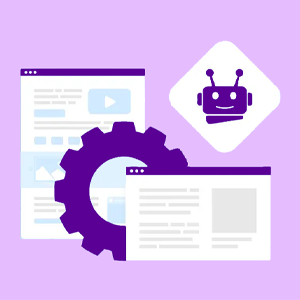 Generative Artificial Intelligence (AI) has made remarkable strides in recent years, revolutionizing various industries by automating tasks and creating new opportunities for innovation. In the domain of software engineering and web development, generative AI has had a profound impact, transforming the way developers build, test, and maintain software applications. This article explores the utilization, advantages, and disadvantages of generative AI in these fields.
Generative Artificial Intelligence (AI) has made remarkable strides in recent years, revolutionizing various industries by automating tasks and creating new opportunities for innovation. In the domain of software engineering and web development, generative AI has had a profound impact, transforming the way developers build, test, and maintain software applications. This article explores the utilization, advantages, and disadvantages of generative AI in these fields.
Utilization of Generative AI in Software Engineering and Web Development
- Code Generation and Automation: Generative AI can automate code generation, saving developers time and reducing the likelihood of human errors. Through techniques such as natural language processing (NLP) and deep learning, AI models can generate code snippets, entire functions, or even complete applications based on high-level descriptions or user requirements. This is particularly valuable for accelerating the development process.
- Debugging and Error Detection: Generative AI can assist in identifying and fixing bugs in software code. AI-driven tools can analyze code repositories, pinpoint common errors, suggest solutions, and even automatically apply fixes. This can improve code quality and maintainability, reducing the need for manual debugging.
- Predictive Maintenance: Generative AI can be used to predict potential issues in web applications or software systems. By analyzing historical data and monitoring real-time performance, AI models can detect anomalies and alert developers to proactively address issues before they lead to system failures or downtime.
- Natural Language Interfaces: Generative AI, combined with natural language processing, enables developers to build conversational user interfaces and chatbots. These interfaces can enhance user experiences on web applications, providing users with more intuitive and efficient ways to interact with software.
- Testing and Quality Assurance: AI-powered test case generation can significantly improve the testing process. Generative AI can automatically generate test cases, explore edge cases, and optimize test coverage, leading to more robust and reliable software.
Pros of Generative AI in Software Engineering and Web Development
- Increased Productivity: Generative AI accelerates the software development process by automating time-consuming tasks such as code generation and testing. This leads to faster project delivery and reduced development costs.
- Improved Code Quality: AI can assist developers in writing cleaner, more maintainable code and detecting and fixing errors. This results in higher-quality software with fewer bugs.
- Enhanced User Experience: Generative AI enables the creation of more natural and interactive user interfaces, leading to improved user experiences on web applications and software products.
- Predictive Maintenance: AI can help identify and prevent issues before they become critical, reducing downtime and improving system reliability.
- Innovation and Creativity: By automating routine tasks, generative AI frees up developers to focus on creative and innovative aspects of software engineering, fostering new ideas and approaches.
Cons of Generative AI in Software Engineering and Web Development
- Dependence on AI Models: Overreliance on generative AI models can lead to a lack of understanding of the underlying code or a decrease in developer expertise, making it difficult to troubleshoot complex issues or adapt to changing requirements.
- Ethical Concerns: AI-generated content, such as chatbot responses, can sometimes produce biased or inappropriate output. Developers must carefully review and curate AI-generated content to maintain ethical standards.
- Security Risks: The increased use of AI in software engineering creates new attack vectors. Malicious actors may exploit vulnerabilities in AI models to compromise applications or systems.
- Skill Requirements: The integration of generative AI requires developers to acquire new skills in AI and machine learning, which can be challenging for some professionals.
- Cost of Adoption: Implementing generative AI tools and infrastructure can be costly, especially for smaller organizations. This may create a barrier to entry for some businesses.
Conclusion
Generative AI is reshaping software engineering and web development by automating routine tasks, enhancing code quality, and improving user experiences. While it offers numerous advantages in terms of productivity, quality, and innovation, developers must also be mindful of potential drawbacks, including ethical considerations and security risks. To maximize the benefits of generative AI, developers should strike a balance between automation and human expertise, ensuring that AI augments their capabilities rather than replacing them entirely. As the field of generative AI continues to evolve, its impact on software engineering and web development will likely become even more significant in the future.
